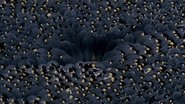
Rating:
7/10 by 2 users
Oceans
Most of Earth's animals live in the sea, where they form a "living soup" or a "massive death chowder" in which it's eat or be eaten.
Writing:
- Matt Lucas
Release Date:
Mon, May 16, 2016
Country:
Language: En
Runtime:
Country:
Language: En
Runtime:
Season 1:

Artic creatures aren't bothered by the cold. Rather, they fear the warmth caused by human activity that is setting the 'Earth's freezer' to 'defrost'.

Serene as it seems, Yellowstone National Park is more unpredictable than an atom of Radium-226, thanks to the active super volcano below it.

Most of Earth's animals live in the sea, where they form a "living soup" or a "massive death chowder" in which it's eat or be eaten.

The wildebeest, one of the many species of ungulates and "cud munchers" that populate the Serengeti, take part in a grand migration every year.

Many of the flora and fauna of Madagascar are found nowhere else on Earth, which is why the island isn't called "Normal-a-gascar."

Penguins, "the natural world's answer to Charlie Chaplin," only have to waddle about to make children -- and Amstrong Wedgewood -- smile.

Life on islands evolves in isolation from the wider world, and in a manner that is "absolutely potty." Much of this life is weird and wonderful.

The great apes, not to be confused with monkeys, have opposable thumbs, complex social politics and other "phenomenally humanlike" qualities.

In forests, the perfect combination of sunlight and rain "makes trees grow like billy-o." Among these trees, an entire world springs into being.

Armstrong narrates a focus on bears, the largest land predators on Earth which, surprisingly, forage for some of the smallest meals available.





















